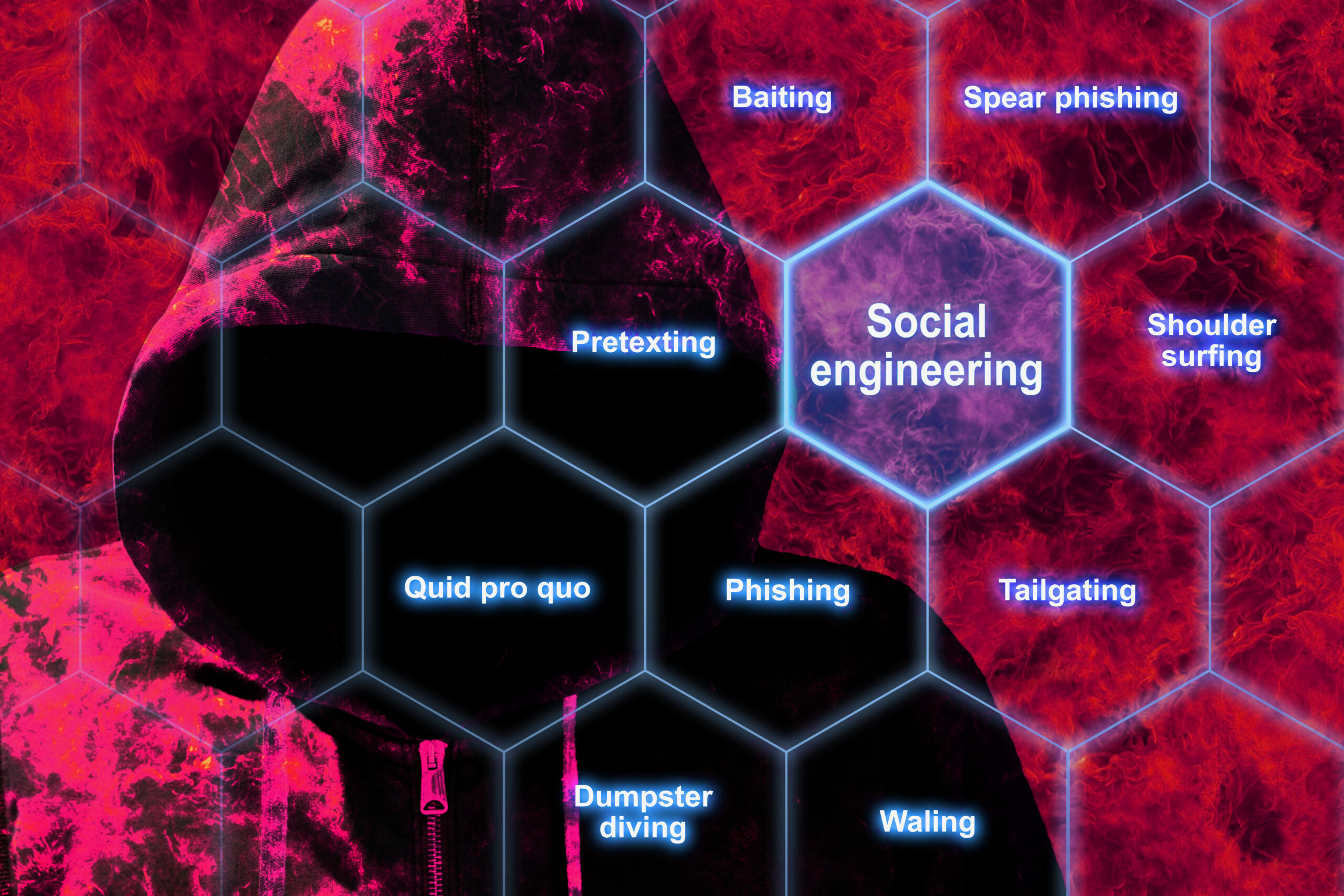Social Engineeering
Social Engineering Attacks: Unraveling the Psychology and Sharing Prevention Tips
Delaware Valley Cyber-Technologies can help you get started. We offer a full range of services, from website design to hosting and security.
As the owner of Delaware Valley Cyber Technologies, I’ve seen firsthand how the cybersecurity landscape has evolved over the years. While our company started focusing on software development and mobile technology, the increasing prominence of cyber threats has led us to shift our attention towards cybersecurity. One of the most prevalent and dangerous types of cyberattacks today is social engineering. In this blog post, I’ll explain the psychology behind social engineering attacks, such as phishing, spear-phishing, and business email compromise (BEC) scams, and share tips for recognizing and preventing these attacks.
Understanding Social Engineering Attacks
Social engineering attacks rely on manipulating human psychology to deceive individuals into divulging sensitive information, granting unauthorized access, or performing actions that compromise security. These attacks exploit the natural tendency of people to trust others and take advantage of their emotions, such as fear, curiosity, or urgency. By leveraging psychological manipulation, social engineering attackers can bypass traditional security measures and gain access to systems or data.
Phishing, Spear-Phishing, and BEC Scams
Phishing: This is a common social engineering attack where cybercriminals send fraudulent emails, text messages, or social media messages to a large number of people. These messages appear to be from legitimate sources and often entice users to click on malicious links or download harmful attachments. The goal is to steal sensitive data, such as login credentials or financial information.
Spear-Phishing: This is a more targeted version of phishing, where attackers research their victims and customize their messages to make them appear more credible. Spear-phishing attacks are often aimed at specific individuals or organizations and may include personal information to enhance their legitimacy.
Business Email Compromise (BEC) Scams: BEC scams involve attackers impersonating high-ranking executives or employees within a company. They send seemingly legitimate emails to employees, instructing them to transfer funds or share sensitive information. These scams are particularly dangerous because they exploit the trust and authority of company leaders.
Tips for Recognizing and Preventing Social Engineering Attacks
Educate and train employees: Regularly conduct cybersecurity awareness training to help employees recognize and respond to social engineering attacks. Teach them to question the legitimacy of unexpected requests and report suspicious messages.
Verify requests: Encourage employees to verify the authenticity of requests by contacting the supposed sender through a known, trusted method (e.g., a phone call or separate email).
Implement multi-factor authentication (MFA): MFA adds an extra layer of security, requiring users to provide multiple forms of verification before granting access to sensitive data or systems.
Establish clear policies and procedures: Create and communicate clear guidelines for handling sensitive data, financial transactions, and access control. Ensure employees are aware of these procedures and follow them consistently.
Keep software up-to-date: Regularly update all software, including operating systems, applications, and security tools, to protect against known vulnerabilities that attackers could exploit.
The psychology behind social engineering attacks makes them challenging to combat, but with proper education, awareness, and security measures, individuals and organizations can reduce their risk. At Delaware Valley Cyber Technologies, we’re committed to helping our clients navigate the complexities of cybersecurity and protect themselves from threats like social engineering attacks. By understanding the psychology behind these attacks and implementing the tips shared in this blog, you can enhance your organization’s security posture and stay one step ahead of cybercriminals.
Keith Rambo
215-313-8345
